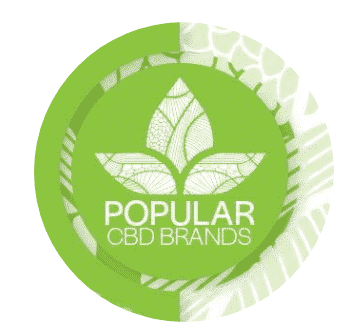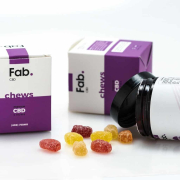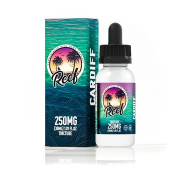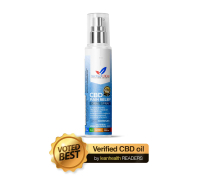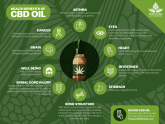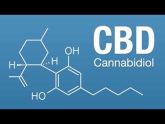What are the processes used to make CBD?
All plants have many different materials in them. You know that vegetables have vitamins and minerals and many other healthy items. You know that vegetable oil, corn oil, and other plant oils are in the baking aisle in the store. In the same way, CBD oil comes from hemp plants. But how?
In most cases, the plant is diced up (sometimes ground up) and placed into a liquid. The liquid absorbs the different materials out of the plant materials. Next, the plant materials are filtered out and away from the liquid leaving you the plant extract. The key is that different things are absorbed from the plant material by different liquids. What comes out from plain water is different than what comes out from salt water. What is extracted using ethanol (the alcohol we drink) is different from isopropyl alcohol (rubbing alcohol) and so on. So, a key to the process is the kind of solvent used during the extraction.
Just like when cooking meat, temperature, and pressure also impact the extraction. Some things survive higher temperatures, and some do not. Cooking with a pressure cooker is different than cooking with boiling water. So, temperature and pressure also impact what exactly is removed from the plant materials.
Some older methods used different solvents and some of those are considered hazardous to one degree or another. For this reason, most products now include “residual solvent” testing, or a statement attesting to not using a hazardous solvent in the process. This comes from the pharmaceutical industry and is intended to show that there’s no solvents left over in the product, which means the product is safe to consume.
Higher temperature processes (like the normal ethanol process) convert or lose some various cannabinoids that are present prior to processing. For example, there is CBD and its acidic cousin known as CBDa (CBD acid). Many of the other cannabinoids have acidic varieties as well. Processing at higher temperatures generally converts all of the acidic varieties into their parent (CBDa becomes CBD) through a process known as decarboxylation. If they aren’t converted, then they are destroyed. Some claim that there is an advantage to not having the acidic varieties. If you are in this camp, then you want to seek out manufacturers utilizing an ethanol process.
The argument to the contrary is that having the acidic varieties are important, particularly to take advantage of the full entourage effect. So, if you are in the market for a full-spectrum product that contains not only the parent, but also the acidic variety, you probably want to look at products that are made using the CO2 process.
As you can see, when there are over 100 different cannabinoids, terpenes, vitamins, minerals, and fatty acids, the exact process used determines exactly what ends up in the final product. One CO2 process can be different (temperatures, pressures, concentrations and so on) from another and the exact content of any one item between the two is different and even more different if it came from a high-temperature process. This is why not all products impact you the same even though on the surface they may seem the same.

What is the difference if it comes from hemp vs. cannabis plant?
The primary difference here is that the cannabis plant is bread to contain THC. THC is the material that “gets you high”. The general rule of thumb is the more there is, the higher you feel. However, the federal government considers THC to be a controlled drug. This means that you cannot purchase it – period.
By federal law, CBD products must contain less than 0.3% THC in order to be sold. For this reason, manufacturers of CBD products normally purchase hemp plants that have been bred to be low in THC. Medical Marijuana companies seeking to produce THC containing products will start with a cannabis plant bread to have high THC content. Both will test it for THC and likely tout the content in their sales literature (low is good for CBD and high is good for medicinal products).
What are the different types of products?
Typically, there are three types of products made: full spectrum, isolates, and Simpson Oils (aka Rick Simpson Oil or RSO). These are differentiated by purity. Simpson oils are the “dirtiest” in that they are very concentrated and are the closest thing to the plant.
They contain more of the whole variety of chemicals (including THC) that the plant has to offer. They also are the most difficult to administer and handle. These are typically sold in syringes because there’s no easy way to package and dispense them.
Isolates are Simpson oils that are purified.
If there are 100 chemicals in a Simpson oil, then an isolate takes a “cut” (say 10 related items) or purified single item. As a comparison, a full spectrum CBD oil normally has many cannabinoids and dozens of terpenes and other items, as opposed to pure CDB, isolate that has only CBD. If you are looking for an entourage effect, then you are not looking for an isolate (unless you are taking the isolate with other things and are looking to “bump” the effect of that single isolate).
Whole Plant vs. CBD
Some manufacturers also differentiate from whole plant products and CBD oils. Both use the whole plant as starting material. Whole plant isolates use a process to maximize all the chemicals at the end. CBD oil products don’t do anything to remove non-CBD things, but the process is built to maximize the CBD content in the end. Again, if you are going for entourage effect, you might want to consider a full plant extract first.
Terpenes vs. Non-Terpenes
There is one other variation offered in the market. In this case, isolates are added back to a CBD oil to enhance a specific outcome. For example, terpenes known to cause drowsiness would be added to a product intended to aid sleep, or terpenes known to minimize pain would be added to a CBD oil to create a product that is intended to address pain relief.
Non-terpene products would tend to be isolates that have removed everything else (including terpenes). As explained above, a pure CBD isolate would contain only CBD and have no terpenes. Some companies are starting to offer purified terpenes as some research is showing that terpenes can react with receptors and cause or modulate the effects (enhance sleep or decrease pain as an example).
Why are different oils listed in the products?
At the end of the extraction or after further isolation, the plant “oil” is either a tar-ry mess, or very paste-like. The manufacturer must decide how to get that product into a bottle or pill or whatever you want to buy in a way that works for the customer. There’s a lot to consider here. The manufacturer must consider the thickness of the product (or how it flows). They also need to consider health impact of the oils used and how this choice relates to their core values. Finally, there is a consideration of the taste.
There are several choices that are often made by the various manufacturers. Some use hemp oil. Some use MTC (usually a coconut oil variant), and others use grape seed oil. In reality, any “healthy oil” that can be consumed is an option.
Manufacturers who are trying to adhere to core values related to “natural” products often dilute their CBD oils in hemp oil. This is obviously a healthy choice in that it contains all the parts of the plant used to make the oil, so there won’t be anything other than hemp plant items in it. These often are not the best tasting ones however!
Other manufacturers seek to enhance the flavor, and some argue health of their products by utilizing other “healthy” oils. MCT oil is one that is often chosen. MCT is medium chain triglycerides or medium chain fatty acids. These can come from many sources, but more often than not it comes from coconuts. It is a subset of coconut oil, and one difference is that it is liquid at room temp (as opposed to whole coconut oil which is solid at room temp).
The argument for using this to dilute the CBD is that MCT is very healthy and enhances the health effects of CBD.
Another option often used is grapeseed oil. This also is considered as a healthy alternative. This oil is high in polyunsaturated fatty acids (PUFAs), especially omega-6. According to the American Heart Association, PUFAs can help reduce cholesterol levels and heart disease. For this reason, some manufacturers utilize this oil to dilute their CBD.
Some manufacturers are choosing other “healthy” oils, such as olive oil, canola oil, flaxseed oil, sesame oil, and even walnut oil. In addition to health, manufacturers are looking at how the diluent oil impacts the product performance in terms of putting it into packages and customer experiences using it, particularly in tincture products.
Can we do something about the flavor please?
Probably the last consideration for a product, especially a tincture that people typically hold under their tongue for 30-60 seconds to enhance absorption into the blood, is taste. Some call CBD oil “skunk oil” because it does have that unique smell. And, it tastes that way too. In order to address this, some manufacturers add flavoring and sweeteners.
In order to stay with the “natural” theme, some people utilize natural flavors. Often, these end up being terpenes, such as limonene (lemon flavor), that occur in hemp plants. However, any “natural” flavor is an option with some choosing a variety of mint for example.
Others choose synthetic flavors. This allows people to utilize more exotic flavors such as passion fruit or grape. Synthetic flavors are used in a variety of products and are totally safe for human consumption.
As for sweetness, manufacturers have settled on two basics options, again trying to keep to the “natural” theme. Some have used agave syrup. There tends to be two options here. In one case, the manufacturer does not use an oil to dilute the CBD, but rather uses agave syrup. This allows for a much sweeter taste. In the other option, they add agave syrup to the diluted product just to give it a little sweet taste. With the same goal, some utilize stevia as the sweetener added to take the bite out of the oil.
Final Thoughts
We’ve seen that choosing a product can be as complicated as the various options offered. Are you looking for a specific isolate, or full plant extract? Do you want flavoring, or do you prefer capsules? At least having read this you know what to look for as you read the product descriptions to decide what to buy!
References:
- //www.simpson-oil.com/
- //www.heart.org/en/healthy-living/healthy-eating/eat-smart/fats/polyunsaturated-fats
- https://popularcbdbrands.com/cbd-oil/
Jacob Daniels
Latest posts by Jacob Daniels (see all)
- Best CBD Companies - September 8, 2020
- Can you Dab CBD? The Answers May Surprise You - May 19, 2020
- Savage CBD Review - May 10, 2020

